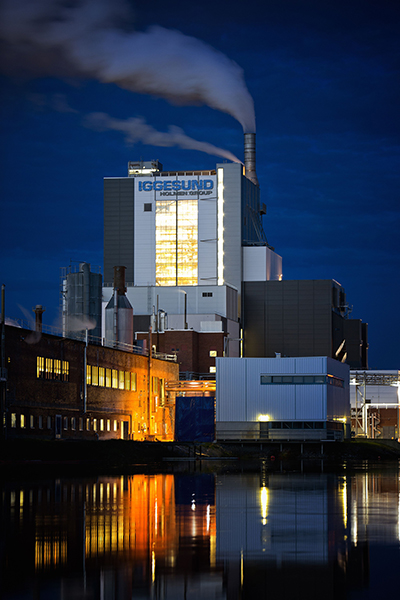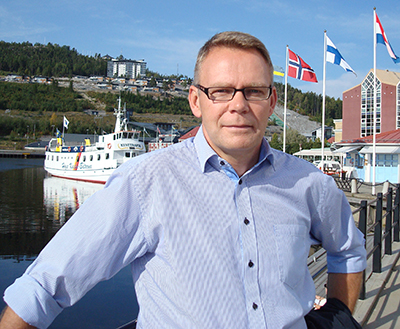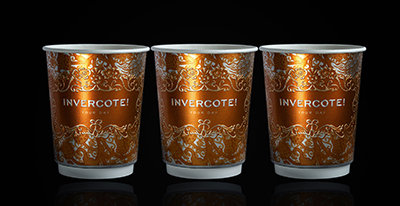Sustainability | Fossil-Free Paperboard Mill Within Reach
- Published: September 02, 2014
For a while in mid-April, Iggesund Mill—Iggesund Paperboard’s Swedish paperboard mill—was able to operate solely on bioenergy and also supply almost all its own electricity needs. The company has two brand families, Invercote, a multilayered solid bleached board (SBB) and Incada, a multilayered folding boxboard (FBB). Its flagship product, Invercote, is sold in more than 100 countries.
Mill Director Olov Winblad von Walter says, “We’re getting close to the vision of a fossil-free mill that we’ve lived with and that has driven our investments for a long time. Our new recovery boiler, which came on line in spring 2012, is getting better and better as we fine tune it, and our increasing pulp production is also boosting our energy production.”

Another important aspect in the vision for Iggesund Mill is that emissions to air and water should be so low that Iggesund is among the global leaders among comparable manufacturers. Yet another goal is that a minimum of byproducts will go to landfill.
Iggesund Mill is one of the world’s integrated paperboard mills with the highest level of investment. When it started up, the new recovery boiler was the mill’s biggest investment to date, at a cost of about €250 million. The boiler enabled the mill to gradually increase its annual pulp production from what was then 350,000 tonnes to 420,000.
“Our sulphate process for pulp production means that we separate out the cellulose fibers that comprise half the mass of a log,” Winblad von Walter continues. “The other half consists of the wood’s binding agent, which is mostly an energy-rich substance called lignin. We burn this in the recovery boiler, and it produces enough steam and electricity to cover more than 90 percent of our energy needs.”

A fossil-free energy supply is not the only benefit from Iggesund’s new recovery boiler. After the boiler had been fine tuned, it turned out that particle emissions from the mill, which were already low, had been halved. Sulphur emissions, which contribute to the acidification of surrounding land, have also fallen by more than 80% from what were already low levels.
UK Mill Runs Solely on Biofuel
Just over a year ago, Iggesund’s board mill in Workington, England, radically changed its own energy source. From having run on fossil natural gas, the mill switched to using biomass. Achieving this required the investment of about €122 million in a new biofuel boiler. Today the mill operates solely on biofuel, and in addition to covering its own energy needs, it also supplies fossil-free electricity to the UK electricity grid.
“One of the goals driving our investments is long-term sustainability, and the investments in both Iggesund and Workington are the result of that approach,” explains Staffan Jonsson, head of Group Technology at the Holmen Group, Stockholm, Sweden, to which Iggesund belongs.
UN Sustainability Index
Iggesund was founded as an iron mill in 1685, but has been making paperboard for more than 50 years. The two mills, in northern Sweden and northern England, employ 1,500 people. Since 2010, the company reports it has invested more than €380 million to increase its energy efficiency and reduce the fossil emissions from its production.
The Holmen Group is one of the world’s 100 most sustainable companies according to the United Nations sustainability index, the Global Compact Index.? Iggesund and the Holmen Group report all their fossil carbon emissions to the Carbon Disclosure Project, an international, not-for-profit organization providing a global system for companies and cities to measure, disclose, manage, and share vital environmental information.
The environmental data form an integral part of an annual report that complies with the Global Reporting Initiative’s highest level of sustainability reporting.
Beverage Cups Reduce Environmental Impact
How elegant can a beverage cup made of a paper material be? Iggesund Paperboard wanted to test the limits of what is possible and decided to create a large cup with a double-walled construction that is fairly common on the market. The double-walled construction means it is possible to use one material inside the cup and another for the outer wall, which functions as both a heat shield and a brand carrier.
??“For the cup’s inside we chose Invercote coated with polyethylene (PE), and for the outside we used Aluvision, which is Invercote extrusion coated with a thin layer of aluminum foil plus PE on top of the foil,” explained Anna Adler, who is in charge of the project for Market Communications at Iggesund Paperboard. “We wanted the metallic feature in order to achieve elegance and shine even though we only printed with one color, vintage orange.”

The project used an ornamental pattern. The plan was to cover everything except the pattern with the orange color, and then get the pattern and product name to shine by giving them a raised embossing. The Swiss toolmaker SMR Stanztechnik AG supplied the high-precision embossing tool, and the printing was then done by the Italian paper cup specialists SDG, Scatolificio del Garda S.p.A.
“We did a number of tests to find out how much we should emboss, but finally decided to emboss the entire pattern and brand name,” explained Iggesund’s Technical Service Manager Alex Guglielmi. “It was interesting to see how the embossing made the metallic tones that weren’t overprinted with orange really shine. A real eye catcher.”
??Matching the printed and embossed areas was a real challenge. To be certain of avoiding any misregister, it was decided to reduce the number of cup blanks per printed sheet from 27 to 24.
“Invercote has fantastic dimensional stability but sometimes it’s better to be on the safe side,” Guglielmi said. “Instead of going with 27, we decided to be cautious and only do 24. It’s still a fantastic result for anyone who wants elegance and a visual impression that can convey a brand.”
??Paperboard’s printability and ability to be finished to a high level of elegance are not the only reasons why Iggesund believes in a renaissance for paperboard-based beverage cups. Competing materials such as traditional plastic or polystyrene foam cups create a much higher carbon footprint than a cup made of paperboard with a thin PE coating.
“A cup made of PE-coated paperboard has a carbon footprint that is scarcely a quarter the size of the one left by the same cup made of plastic – just comparing the weight of the materials used,” Adler emphasized. “By that measure alone, the paperboard cup is the clear winner. If you add the existence of efficient recycling systems and the fact that the stored bioenergy can finally be recovered, paperboard is an outstanding choice of material.”
This email address is being protected from spambots. You need JavaScript enabled to view it.




